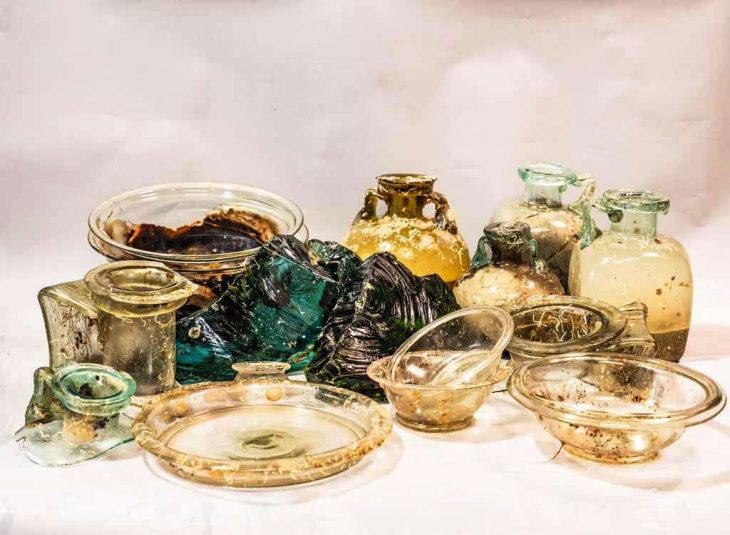Italian-French mission has unearthed a remarkable underwater treasure trove – a Roman shipwreck laden with glassware and raw glass blocks. This unique find, resting at a depth of 350 meters (1150 feet) between Capo Corso, Corsica, and Capraia Island, Italy, sheds light on ancient maritime trade routes and glassmaking techniques.
The shipwreck is only the second known instance in the Mediterranean to hold such a cargo. This single vessel left behind a vast collection, including thousands of glass fragments and tons of raw glass blocks in various sizes and colors – ready to be transformed into commercial tableware.
The mission, led by the superintendencies for underwater cultural heritage of both Italy and France, brought together a team of archaeologists and a marine biology expert. This collaboration not only focused on the historical significance of the wreck but also aimed to understand the impact on the surrounding deep-sea ecosystem.
The wreck was first discovered in 2012, initially thought to be in French waters. After several years of collaboration and negotiation, the site was confirmed to be within Italian territory in 2016, paving the way for a joint excavation effort.
The mission employed cutting-edge technology to explore the deep-sea environment. France provided its flagship research vessel, the Alfred Merlin, equipped with two remotely operated vehicles (ROVs) – Arthur and Hilarion.
Arthur, a groundbreaking new ROV, played a critical role. Designed for deep-sea exploration, it can reach depths of 2500 meters and is equipped with high-definition video cameras, sediment vacuums, and object retrieval capabilities. Hilarion, another powerful ROV, facilitated high-resolution video recording up to 500 meters deep.
Utilizing these advanced tools, the team successfully recovered a diverse array of glass artifacts, including bottles, plates, cups, bowls, and a small cosmetic vessel (unguentarium). Additionally, several raw glass blocks and two large bronze basins were retrieved.
While initial estimates place the shipwreck’s final voyage sometime between the late 1st century AD and the early 2nd century AD, further analysis of the recovered materials promises to refine the timeline and reveal more about the ship’s intended route.
A preliminary examination of the cargo, including specific amphorae types and the sheer quantity of glassware and raw glass blocks, suggests the ship likely originated from a Middle Eastern port, possibly in Lebanon or Syria. Its final destination is believed to have been the Provençal coast of France.
This remarkable discovery offers a fascinating glimpse into ancient trade networks and glassmaking practices. The mission’s collaborative approach, combining archaeological expertise with marine biology, paves the way for a more comprehensive understanding of the Roman maritime world and its impact on the underwater environment. The ongoing analysis of the recovered artifacts promises to unveil further secrets from this captivating deep-sea treasure trove.
